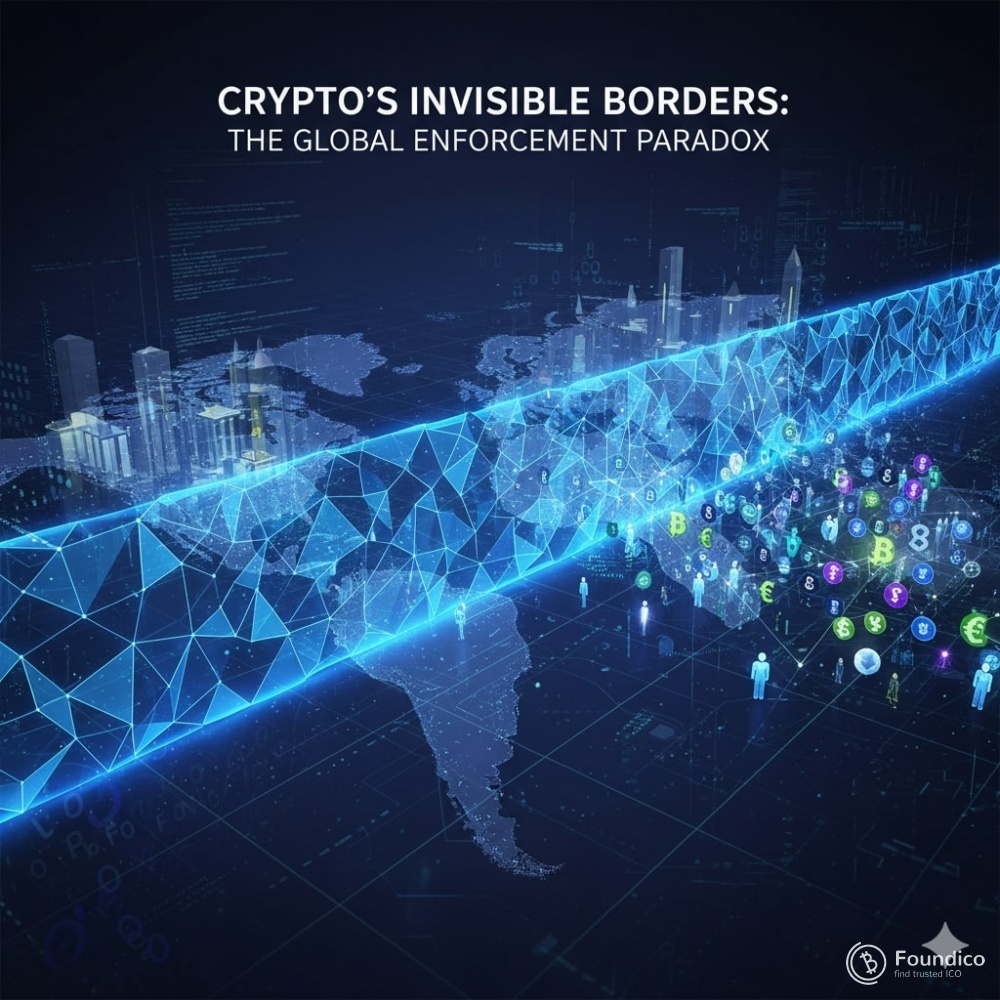Crypto’s Invisible Borders: The Global Enforcement Paradox

By Dr. Pooyan Ghamari, Swiss Economist and Swiss Visionary
When Money Learns to Fly
Cryptocurrency does not walk across borders; it teleports. A farmer in Kenya receives payment from a freelancer in Canada before the coffee cools. No banks, no customs, no questions. This is the miracle of blockchain—and the nightmare of every regulator who still believes sovereignty ends at a fence.
The Ghost in the Ledger
Try arresting a transaction. It has no passport, no address, no face. It lives as code duplicated on 100,000 computers in 190 countries. Shut down an exchange in London, and the same coins surface in Singapore by breakfast. Ban mining in Beijing, and the rigs hum to life in Kazakhstan by lunch. The ledger laughs at borders the way wind laughs at walls.
The Nation-State vs. the Network-State
Governments draw lines on maps; blockchains draw circles around the planet. One side issues decrees, the other issues tokens. One side demands identity, the other offers anonymity. The clash is not just legal—it is existential. Every new rule in Washington becomes a business opportunity in Dubai.
The Whack-a-Mole Economy
Regulate hard, and capital migrates faster than a private jet. Regulate soft, and fraud festers like mold. In between lies a narrow path where innovation breathes and predators starve. Most countries are still tripping over their own feet trying to find it.
Privacy Coins: The Perfect Alibi
Monero, Zcash, and their cousins are built to vanish. They wrap transactions in cryptographic fog, turning forensic tools into guessing games. Trace the money, and you trace a shadow. This is freedom to some, felony to others—and the debate happens in code long before it reaches a courtroom.
The Mirage of Global Consensus
Imagine 195 finance ministers agreeing on lunch, let alone on decentralized finance. The G20 talks, the FATF writes guidelines, the UN issues statements. Meanwhile, a 19-year-old in Estonia launches the next billion-dollar protocol before the ink dries. Diplomacy moves in years; crypto moves in minutes.
The Stablecoin Compromise
Pegged to dollars, audited in real time, issued by licensed entities—stablecoins are the Trojan horse of compliance. They look like crypto, walk like crypto, but carry KYC baggage in their saddlebags. Regulators love the leash; users tolerate it for the speed. A fragile truce, but a truce nonetheless.
Blockchain Sherlocks
Private firms now map illicit flows better than most intelligence agencies. Chainalysis, Elliptic, and their rivals turn public ledgers into crime-scene diagrams. One address links to a ransomware gang, another to a sanctioned oligarch. The data is there; the political will to act across borders is not.
The Migration of Talent and Taxes
Ban crypto, and you export your best engineers. Embrace it, and you import their payroll taxes. Switzerland, Singapore, Portugal, and Estonia have turned regulatory clarity into economic magnets. The rest of the world watches brain drain in real time.
A Blueprint for Borderless Oversight
Start with shared ledgers for regulators, not just for traders. Build real-time dashboards that flag anomalies without exposing users. Reward jurisdictions that cooperate; isolate those that shelter crime. Treat the network like critical infrastructure—because it already is.
The Ledger Does Not Blink
Crypto will not wait for perfect laws. It will not pause for summits or beg for permission. The question is whether we design guardrails that guide without strangling, or whether we keep swinging hammers at smoke. The future of money is being written in code; the future of enforcement must be written in collaboration.
